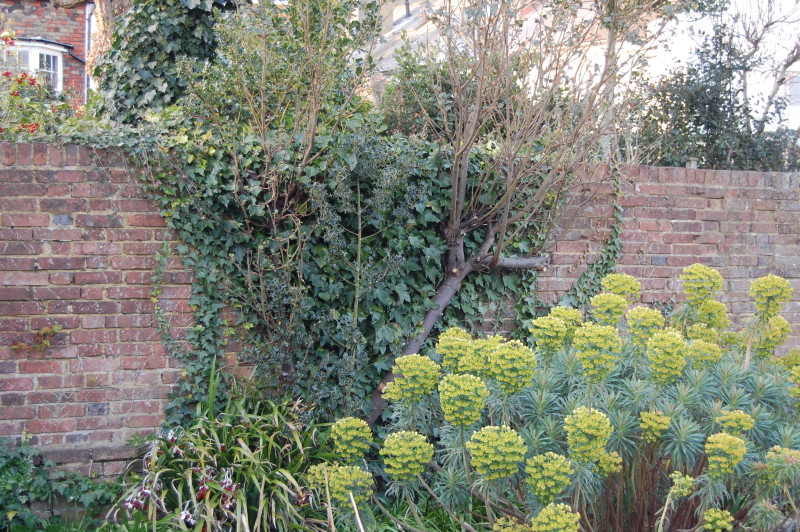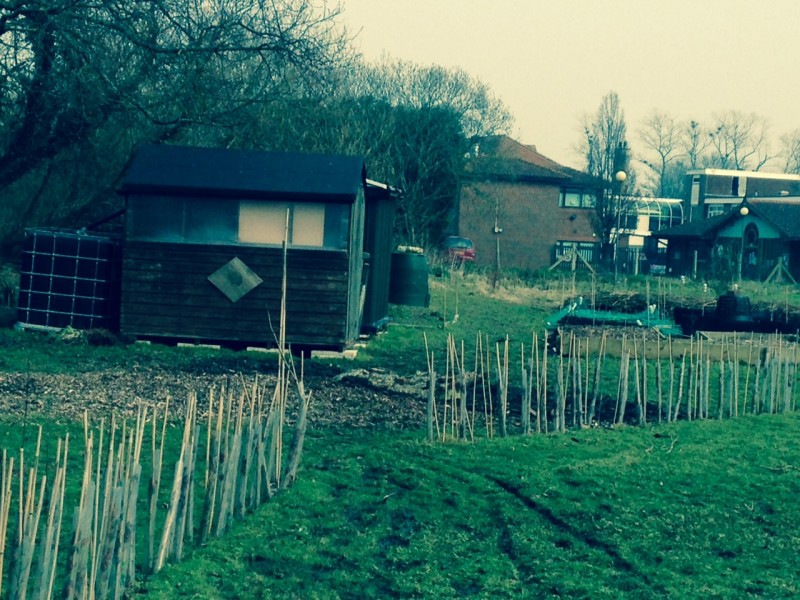It may still be cold and wet outside but now is the time when our gardens are stirring themselves into life, and if we’re not careful, into a jungle of thugs and weeds. We all have fantasies of sitting surrounded by greenery and perfumed flowers, thinking about picking a few tomatoes and herbs on the way into the kitchen. How many of us are realistic about the work needed to bring about this paradise and what are some of the dilemmas we face in trying to create our gardens?
Firstly, should we be ruthless or relaxed? We may have a shed full of strimmers and edging tools, but if that leads to a garden that looks as though it’s ready for a board game rather than plant growth is it worth the effort and expense?
While not advocating complete neglect of lawns and edges, a few areas of wild grass, or indeed, swathes of uncut grass will look interesting, as well as providing encouragement for wildlife. The yearly mowing also provides rich material for the compost heap, although it may be necessary to hire specialised equipment, or even make full use of that strimmer you haven’t needed all summer.
Secondly, how much and in what way should we go for the kill? The language of gardening is often couched in words of war. We attack the ivy, we hack down the brambles, we slaughter the slugs, snails and greenfly, no matter how much we’re depriving wildlife of food and shelter, or perhaps poisoning the birds and bees.

[## insert ivy pic about here please]
Of course we don’t want to take out a machete every time we walk down the garden but ivy really doesn’t harm brickwork (unless it’s already crumbling in which case . . .). What ivy does is provide food and shelter for birds and insects during those bleak winter months – the same birds and insects that will eat up the nasty bugs in the summer. Bramble roots are good for soil retention and provide luscious blackberries for animals and humans.
We do need to keep control over slugs and snails, frequently cited as the most common garden problem, but we should take care to use organic ferrous based pellets which shouldn’t kill the birds, especially if used sparingly. Or we can go round crunching the snails and snipping the slugs, although I find I’m a bit squeamish about that.
A third dilemma for me is to what extent I “cheat” by buying, fairly cheaply, mail order plug plants to give me a head start, or trying to grow from seeds and cuttings, which sometimes means flowering and fruiting can be delayed.
If you have extensive greenhouse facilities and can defend seedling against mildew, damping off and other ills, then it can be very satisfying to grow from scratch. But I’ve come to a stage in my gardening life where I’m happy to rely on the expertise of tried and tested plant growers as I’m getting quite keen on a quicker effect. Of course, using perennial plants means you only need a few booster plants, or vegetable seedlings each year.
Gardening is such a fascinating hobby that provides each of us with our own dilemmas. Why else are there so many books, magazines, television programmes trying to help us solve our problems?
Photos: Seana Lanigan and Linda Harland



